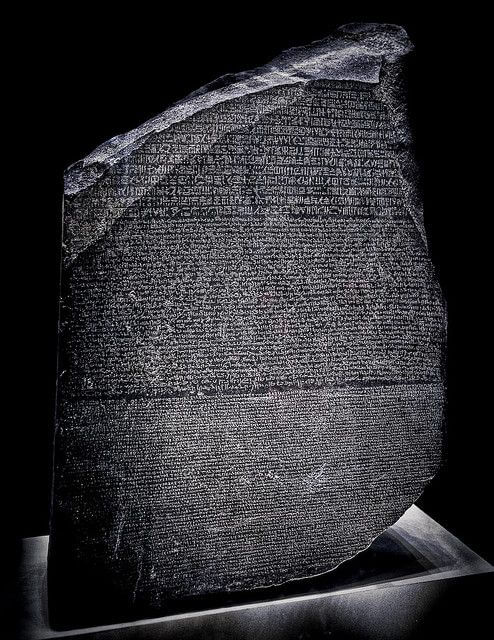Every day for 30 days we will be featuring a museum object that has inspired or intrigued us, in the hope that “an object a day keeps the doctor away.” We love creating exciting, meaningful storytelling through engaging experiences, but still firmly believe that it is hard to beat the thrill of being in the presence of authentic artefacts. Today’s object is: the Rosetta Stone.

This is what a sought-after treasure from an Indiana Jones film is supposed to look like. And just like many movie McGuffins it acts as a key to the secrets of an ancient world.
The story of the stone’s journey from Egypt to Bloomsbury is worthy of a Hollywood plot. The stone features a decree issued in 196 B.C. by a group of Egyptian clergy and Egypt’s ruler, Ptolemy V, attesting to his generosity and devoutness. Originally displayed in a temple, it was probably moved in late antiquity and eventually used as building material in the construction of Fort Julien near the town of Rashid (Rosetta) in the Nile Delta. There it was discovered in July 1799 by French soldier Pierre-François Bouchard during the Napoleonic campaign in Egypt. The British defeated the French and took the stone to London under the Capitulation of Alexandria in 1801. It has been on public display at the British Museum almost continuously since 1802.
The important thing for us is that the decree is inscribed three times, in hieroglyphs, Demotic (the native Egyptian script used for daily purposes, meaning ‘language of the people’), and Ancient Greek. Scholars’ knowledge of Ancient Greek gave us the starting point from which to decode the other languages, so opening a linguistic portal to an ancient civilization.
The British Museum is currently closed. Check website for details.
